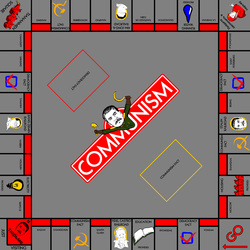New Patterns of Nationalism
Impact of Communism on the World
Ally Kane, Emily Mertz, Lauren Lucas, and Natalie Prisciandaro
Describe the impact that the rise and fall of communism had on the world. Compare the Russian and Chinese
revolutions, and explain how the outcomes of the World Wars led to the weakening of direct imperial influence in specific independent movements.
revolutions, and explain how the outcomes of the World Wars led to the weakening of direct imperial influence in specific independent movements.
The Basic Gist

New patterns of nationalism starting towards the end of the age of imperialism shaped the world as we know it today. During the age of imperialism, many countries in Europe developed huge senses of national pride that led to the build up of their armies, colonies, and consequently WWI. After WWI and WWII, these countries imperial power lessened, affecting the countries that had been imperialized around the world. Also, during WWI Russia became the Soviet Union, a communist nation. Communism then arrived in China later, and from these two large countries spread until 1/3 of the world was communist. In 1989, after the long Cold War, the world saw much of communism fall with the Berlin Wall, and the world as it stands today was set in place.
Who/Where: Europe, Russia, China, the United States, and Communist and Imperialized Countries Across Globe
What: Nationalism and Communism Majorly Impacted the World
When: 20th Century (Early 1900s to 1990s)
Why: Nationalism, Social Unrest, and Imperialism
What: Nationalism and Communism Majorly Impacted the World
When: 20th Century (Early 1900s to 1990s)
Why: Nationalism, Social Unrest, and Imperialism
